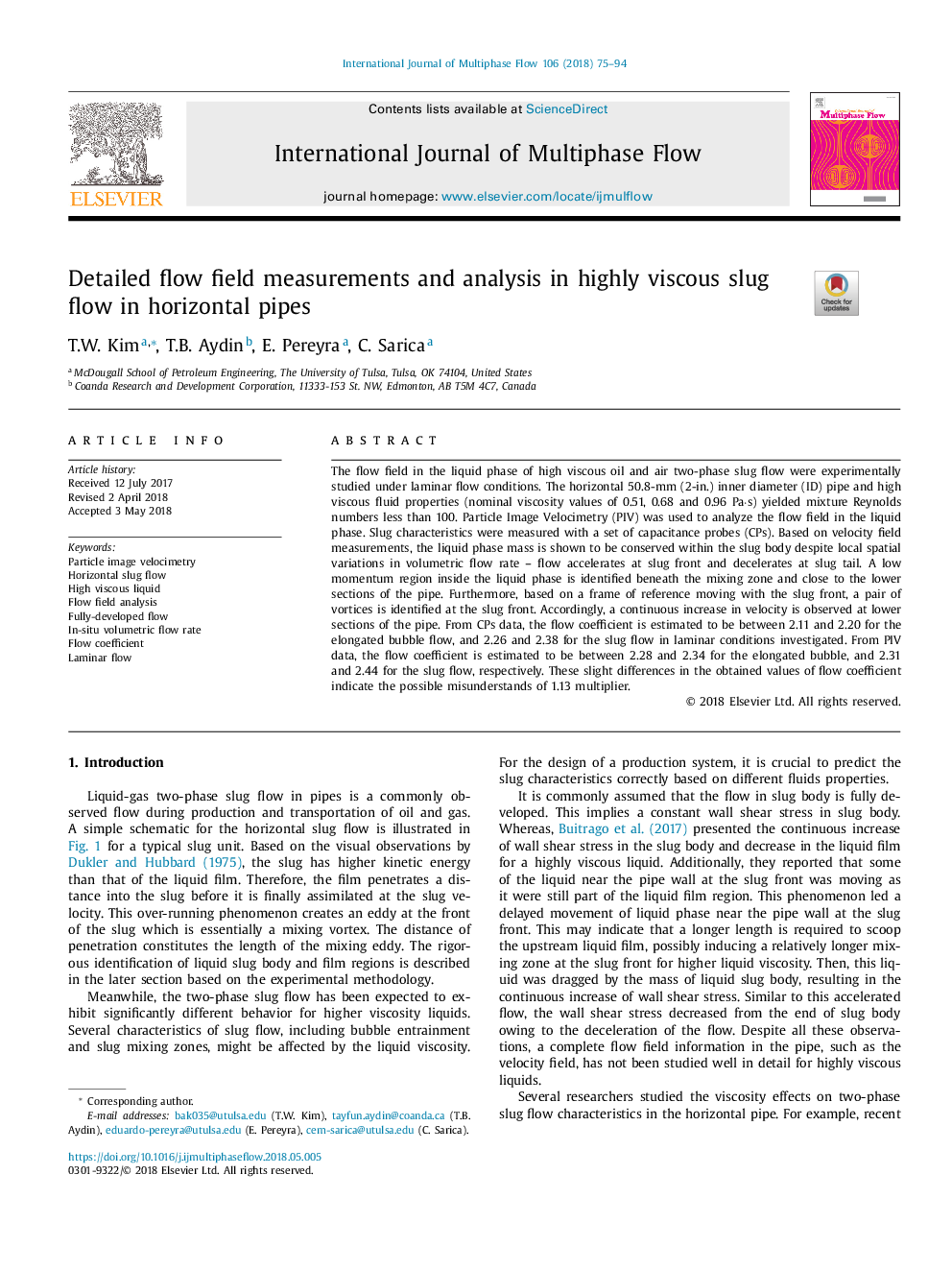| Article ID | Journal | Published Year | Pages | File Type |
|---|---|---|---|---|
| 7060045 | International Journal of Multiphase Flow | 2018 | 20 Pages |
Abstract
The flow field in the liquid phase of high viscous oil and air two-phase slug flow were experimentally studied under laminar flow conditions. The horizontal 50.8-mm (2-in.) inner diameter (ID) pipe and high viscous fluid properties (nominal viscosity values of 0.51, 0.68 and 0.96 Pa·s) yielded mixture Reynolds numbers less than 100. Particle Image Velocimetry (PIV) was used to analyze the flow field in the liquid phase. Slug characteristics were measured with a set of capacitance probes (CPs). Based on velocity field measurements, the liquid phase mass is shown to be conserved within the slug body despite local spatial variations in volumetric flow rate - flow accelerates at slug front and decelerates at slug tail. A low momentum region inside the liquid phase is identified beneath the mixing zone and close to the lower sections of the pipe. Furthermore, based on a frame of reference moving with the slug front, a pair of vortices is identified at the slug front. Accordingly, a continuous increase in velocity is observed at lower sections of the pipe. From CPs data, the flow coefficient is estimated to be between 2.11 and 2.20 for the elongated bubble flow, and 2.26 and 2.38 for the slug flow in laminar conditions investigated. From PIV data, the flow coefficient is estimated to be between 2.28 and 2.34 for the elongated bubble, and 2.31 and 2.44 for the slug flow, respectively. These slight differences in the obtained values of flow coefficient indicate the possible misunderstands of 1.13 multiplier.
Related Topics
Physical Sciences and Engineering
Chemical Engineering
Fluid Flow and Transfer Processes
Authors
T.W. Kim, T.B. Aydin, E. Pereyra, C. Sarica,
